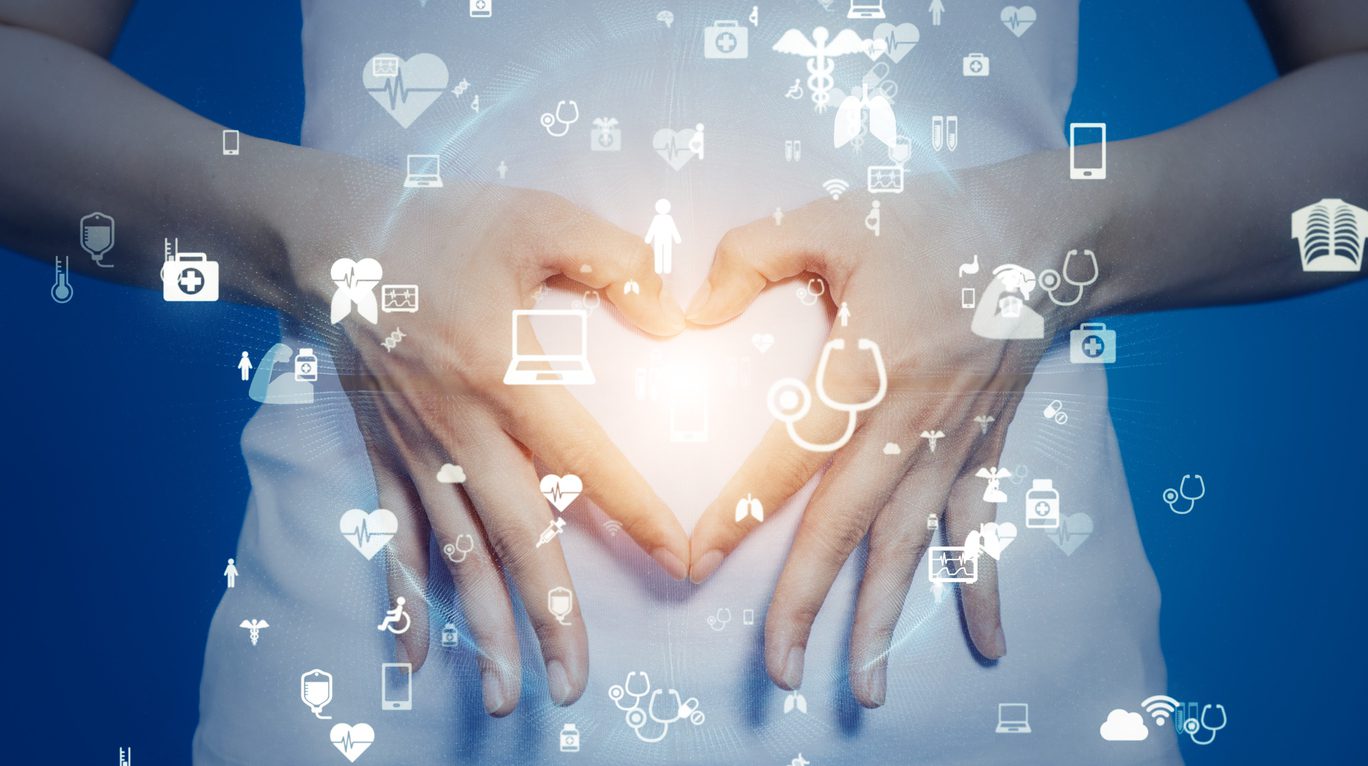Women face unique challenges in their lives that men just don’t have to face. They are often pulled in so many directions, all while keeping a smile on their face as yep, it is that time of the month. From teens who suffer from period cramps to a middle-aged woman with endometrioses, period pain is REAL! Let’s not forgot about those wonderful leg cramps that many pregnant women endure during pregnancy. Oh, then there are post-partum cramps too!
When it comes to breast feeding, many women may feel like the Sahara desert as they have constant thirst. Their water bottle is their new constant companion, sorry dad. If only there was some relief. It seems like there is just another obstacle for many women to overcome as they go through life’s journey…but what if there is a solution that works for many women
Period pain from issues related to the monthly cycle, menstrual cramps, and endometriosis on the physical side and Premenstrual Syndrome (PMS) on the mental side - to the extreme stress of pregnancy and breastfeeding, women have unique events through life that cause pain.
Whether it is making period cramps go away or leg cramps go away during pregnancy or helping the lactating mother produce more milk and reduce her thirst, what is one common nutrient that helps each of these problems? What is the one nutrient that only 1% of American women reach the recommended daily intake, while the average woman consumes less than half of the recommended daily intake? Keep reading to learn more!!
Menstrual Cramps – Cause and Cramp Relief
Menstrual cramps are an incredibly common issue for women of reproductive age. 93% of teenage girls report period cramping during their cycles. Among all women of reproductive age, 60% report period cramps. So, this is a common problem during menstrual periods, but should it be considered normal?
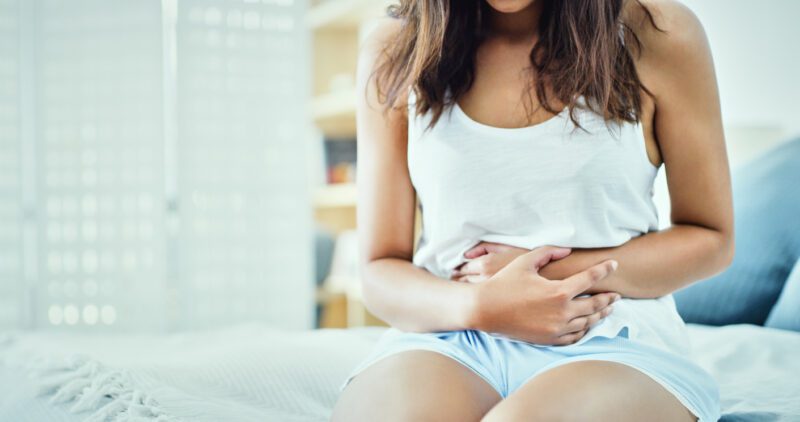
In fact, it is estimated that the average woman loses nine days of work every year due to menstrual cramping. But how can this issue be fixed to help you live a normal life without sacrificing you daily activity due to your menstrual cycle?
What causes menstrual cramp pain?
The uterus is a smooth muscle, meaning it moves involuntarily. In other words, you have no control over what it does and when. During the menstrual cycle, the uterus contracts and relaxes repeatedly.
This repeated contraction cycle is to help shed the endometrial uterine lining more, speeding the uterine tissue and uterine lining's expulsion rate and shortening your period. Period cramps are, at their core, repetitive use cramps. This painful cramp is commonly experienced in the hands when doing a repetitive task.
Basically, the uterus runs a marathon each month, so no wonder it cramps up. Especially when there is a critical nutrient missing in women's diets...oh, and it is missing in men's diets too!
The core cause of menstrual cramps
All muscles, both smooth (involuntary) and striated (voluntary) work the same way. Contractions are first caused by the inversion of the cell's polarity by moving sodium inside and potassium outside. This initiates the opening of calcium channels which is the critical cofactor for myosin movement and muscle contraction.
Muscles relax by pumping potassium back inside while pumping sodium back outside. This closes the calcium channels and the calcium is pumped back into the sarcoplasmic reticulum. When there is no longer enough potassium inside the cell, the calcium channels cannot close and the muscle cannot relax, which is a cramp.
Painful period cramps are often so strong because the uterus is a unique organ system with incredible strength and as mentioned, muscle contraction is involuntary. When experiencing a skeletal muscle cramp, or voluntary muscle, the severe pain can be reduced by stretching and trying not to use the dysfunctional muscle, although this stretching and rubbing results in temporary relief at best and offers minimal pain relief.
As an involuntary smooth muscle, painful menstrual cramps cannot be controlled. They must be stopped via other interventions, with the most effective being giving the uterus the nutrition needed to both relieve pain from menstrual cramps and restore normal function, taking away menstrual pain. Remember, each month your uterus runs a marathon, so without normal levels of potassium, it will cramp up!
Severe Menstrual Cramps from Endometriosis
While the cause of cramps is the same, endometriosis introduces another layer of intense easing menstrual cramps and pain. Endometriosis is caused when tissue similar to the endometrial lining is outside the uterus. This causes more intensely painful periods, period cramps, pain during sex, increased bleeding during the menstrual cycle, and even infertility.
Commonly used interventions for menstrual cramps
Traditionally, Non-Steroidal Anti-Inflammatory Drugs, or NSAIDs, treat menstrual cramps. These work by inhibiting the production of prostaglandins. Prostaglandins are inflammatory molecules that also control smooth muscle contraction. By inhibiting their production, the contraction of the uterus is also inhibited.
The most commonly known products for treating period cramps are Midol and Pamprin, which function via the painkiller acetaminophen, more commonly known as Tylenol. This drug works by simply blocking menstrual pain signals in the brain.
Other treatments commonly used as a natural pain reliever to ease menstrual cramps include a hot water bottle and Transcutaneous Electrical Nerve Stimulation (TENS). These increase blood flow slightly and try to relax the muscles to relieve menstrual cramps, but mainly distract from the current pain emanating from the uterus.
These treatments function by simply masking the underlying problem of the period cramps. So what causes severe period cramps and pain in lower abdomen in the first place?
Endometriosis pain relief
Similar to treating primary period cramps, secondary period cramps caused by endometriosis is most commonly treated with pain relief medication. The use of oral contraceptives to minimize the number of cycles per year is also a commonly used medical treatment to reduce the frequency of period pain.
There are also surgical options for treating endometriosis. There is a more conservative surgery in which the reproductive tract, uterus, fallopian tubes, and ovaries are preserved to maintain fertility. A hysterectomy, or removal of the uterus, is the final treatment for severe endometriosis, but it results in complete infertility and is a last resort. While surgeries are effective for stopping the source of painful cramps, they present more risk and life-long effects.
By increasing potassium consumption, the intense menstrual pain caused by endometriosis can be better controlled by eliminating increased pain from period cramps. Eliminating the serious period pain and cramps by adding Krampade to your daily diet is a simple way to dramatically reduce menstrual pain and decrease the period pain in each cycle, even with endometriosis.
So why is the potassium low?
The average inactive person loses 4,500 mg of potassium daily in the heat. There is an average loss of 250 mg for every hour of exercise. Only 1% of women get enough potassium per day. To put things in perspective, to get the 4,700 mg recommended would require 11 bananas.
The average teenage girl only consumes 2,008 mg of potassium daily, while older women of reproductive age consume about 2,400 mg daily.
This lack of potassium in the diet means less in the muscles, including the uterus. Less potassium means more period pain and menstrual cramps.
Simply increasing the amount of potassium in the diet menstrual cramps can be a thing of the past.
Premenstrual Syndrome – Mental Health and Nutrition
While the incidence varies depending on geographical location, an average of 47% of women suffer from PMS. Even severe PMS, known today as PMDD, affects 5% of menstruating women.
Nearly 30% of women report that PMS symptoms interfere with daily activities every cycle. The inhibition of daily life explains why the average woman loses nine days of productivity each year.
What are the possible treatments for PMS?
Given that the underlying cause is unknown, the normal treatments include the typical behaviors of a healthy lifestyle, such as getting more exercise, healthy eating, and sleeping.
NSAIDs may help with prescription medication such as antidepressants and hormonal birth control pills, but these have more side effects, so consult your physician.
The simplest solution is to get better nutrition. Specifically, more potassium.
Regular potassium supplementation helps stop premenstrual dysphoric disorder and premenstrual syndrome
Small studies show the remarkable effectiveness of supplementing potassium to women with severe PMS (now referred to as PMDD or premenstrual dysphoric disorder). Consumption of just 600 mg of potassium per day made their PMS disappear after a few menstrual cycles.
By the fourth cycle, these women with severe PMS (called PMDD today) no longer had symptoms of PMS and had better overall health.
Krampade 2K gives 2,000 mg per serving and can easily eliminate PMS symptoms by simply getting the potassium levels in the tissue to where they need to be, both in the blood vessels of the uterus and brain, leaving you feeling your best, no matter what time of the month it is.
Nighttime Leg Cramps During Pregnancy – Simple Nutritional Cramp Relief
Pregnancy comes with all sorts of new feelings of both joy and apprehension. The first half of pregnancy comes with things like morning sickness, changes in smell and taste, and mood swings. No sooner do these go away. Sleep gets harder, then leg cramps begin.
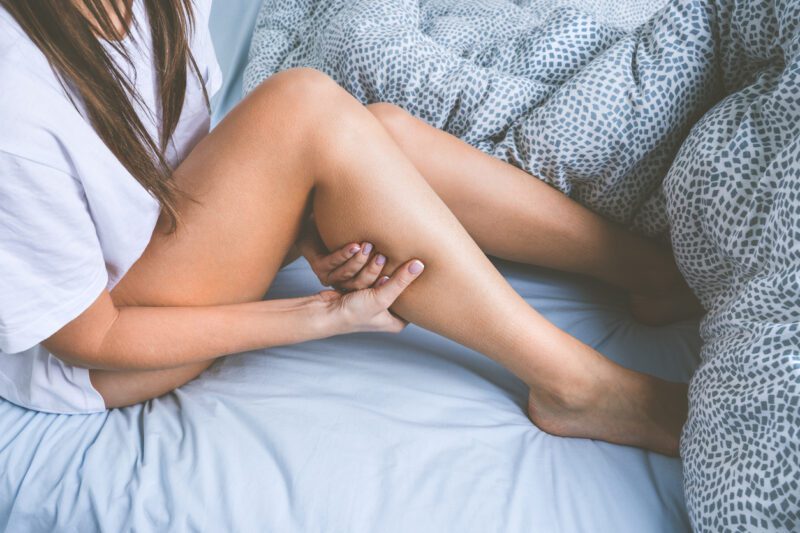
These painful and often severe cramps are especially mysterious as they happen when muscles relax at night. Most cramps occur during activity, be it everyday chores or strenuous exercise.
Potassium needed during pregnancy
During pregnancy, potassium demand increases tremendously to support the rapidly growing baby, with 5,100 mg needed daily, or roughly 12 bananas.
Potassium moves away from leg muscles during sleep
When sleeping, potassium is rearranged to support critical organ systems, namely the brain, heart, liver, and kidneys. When pregnant, the baby also takes priority over the mother’s body.
The largest amount of potassium available for critical organ systems is in the skeletal muscles. So, when sleeping, this potassium is mobilized to higher-priority organs and, most importantly, the new life growing in the uterus.
Increased potassium stops painful cramps during pregnancy
When the potassium level inside the muscle is too low, this depolarizes the muscle and gives the signal to contract to relieve cramps. Without more potassium to put inside the muscle, the muscle cramp persists.
By simply increasing the dietary potassium throughout pregnancy, nighttime leg cramps are prevented.
Krampade is easy and safe to use during pregnancy to give both mom and baby the potassium they need for optimal health and vitality.
Lactation and Breastfeeding – Reach for the Farmer’s Standard
With the shortages and cost of formula, breastfeeding is becoming more important for mothers. Not only does breastfeeding save money, but it also is better for your baby.
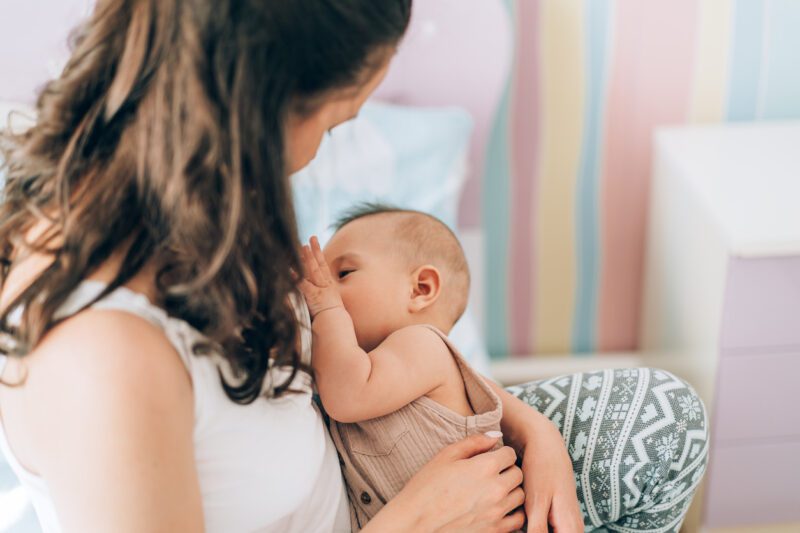
Like pregnancy, more potassium is needed when lactating, with a recommendation of 5,100 mg daily or 12 bananas. This is convenient as the potassium needs do not change from pregnancy to breastfeeding, which is understandable since mom still feeds the baby.
Potassium drives milk production and let down
Like all bodily fluids, milk production is driven by potassium. Potassium movement from inside a cell to outside drives the fluids produced by various cells in the body outside the cell.
This is why when someone stops sweating, it is almost always a lack of potassium in the sweat gland. The mammary gland is no different.
Increasing potassium consumption overcomes higher sodium intake and increases the likelihood of long-term breastfeeding success
Too much sodium and insufficient potassium increase the likelihood of low breast milk production. Increasing potassium consumption after birth is crucial for establishing long-term breastfeeding and milk production success.
Maintaining at least 5,100 mg of potassium throughout the lactation journey is critical to maintaining supply, a healthy diet, and minimizing stress.
Krampade is the easy way to get the potassium needed to maintain a healthy milk supply and take a little stress away from the new joys and responsibilities of new parents.
Potassium is the key to women’s health and relieving painful period cramps
The unique and beautiful function of women’s bodies is a source of great pain for many, both mentally and physically. Simple nutrition is the key to a more comfortable and fulfilling daily life, every day, no matter what.
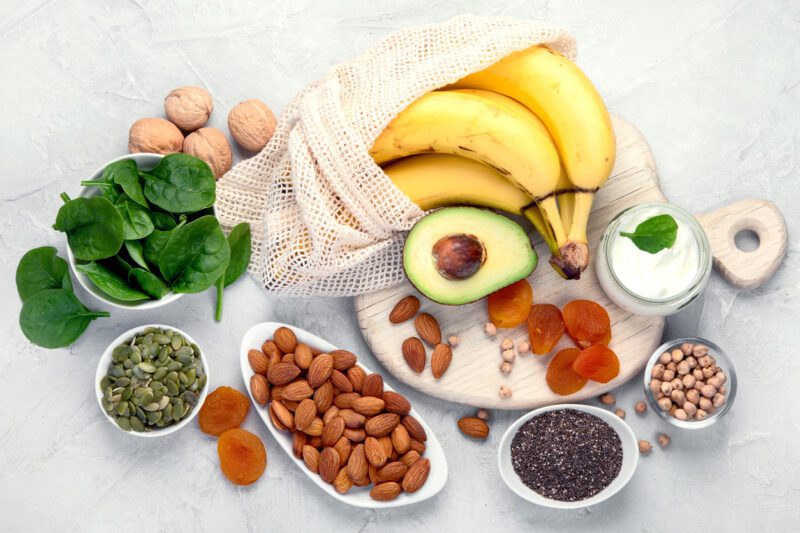
Regular exercise and a healthy diet are the places to start, but what is often missing in the latter is adequate potassium intake.
By simply getting the potassium needed each day, women experience menstrual cramp relief, a stop to PMS/PMDD, and even the burdens of pregnancy and breastfeeding are lightened.
Krampade is a science-backed way to have relief from cramps and a healthier you without drastic and often difficult-to-maintain lifestyle changes.

